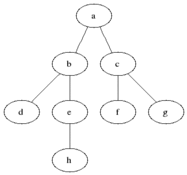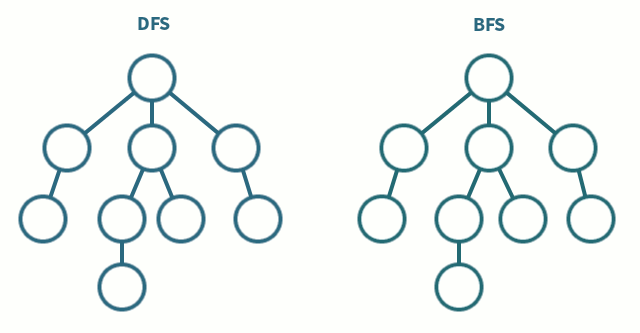a tree is an abstract data type which stores data in the shape of a downwards-growing tree and every entry is called a node
node
trees store data as nodes, meaning each item in a tree is called a node
each node x has the following fields
key(x): a key that's used to identify the node (like every data structure)info(x): contains the data we need to store (like every data structure)left(x): a pointer to the left child ofxright(x): a pointer to the right childparent(x)(optional): a pointer to the parent ofx
every node in a binary tree has from 0 to 2 children
height
the height of a node x is defined as the height of subtree of said node, denoted by
balance factor
height
the height of a tree is the number of the nodes in the longest path downwards (including the root node)
level
the level of a row in the tree is its distance from the root whose level is 1
root
the tree itself T (not every node) contains a pointer root(T) that points to the root node of the tree (the first and topmost node).
leaf
a node that doesnt have children is called a leaf
internal node
a node that has atleast one child is called an internal node
sibling
2 nodes are considered siblings if they share the same parent node
ancestor
an ancestor of a given node is a node that is at an upper level of it
descendant
a descendant of a given node is a node that is at a lower level of the given node
subtree
for some binary tree T and a node x of said tree we denote
as the subtree whose root is x, and the left subtree of x is the tree whose root is the left child of x denoted by
and the right subtree of x is the tree whose root is the right child of x denoted by
the height of this tree is 4
complete tree
a complete binary tree is a binary tree in which every node has 2 or 0 children, and the leaves are all on at the same level
almost complete tree
an almost complete binary tree is a binary tree from which 0 or more nodes have been deleted continuously from the right part of the last level of nodes
the nodes in the last level in an almost complete binary tree have to appear continuously from left to right
every complete tree is an almost complete tree but not every almost complete tree is a complete tree
every level contains 2 times as many nodes as the level before it, except perhaps for the last level
the height of a tree is
the number of nodes in a tree is
the number of nodes at height is
tree breadth-first search
breadth-first search or BFS for short, explores each level before moving onto the next one extra memory, usually a queue, is needed to keep track of the child nodes that were encountered but not yet explored.

tree depth-first search
depth-first search or DFS for short, consists of exploring branches as far as possible before backtracking and exploring branches of other nodes
this is the algorithm we'll be using because its simpler

inorder traversal
left, parent, right
Algorithm inorder(tree) 1. go to the left child, i.e., call inorder(left-child), print it 2. go back to the parent, print it 3. go to the right child, i.e., call inorder(right-child), print it
note that before printing a child will always call inorder(left-child), so the first node to print would be the leftmost node in the deepest level
preorder traversal
parent, left, right
Algorithm preorder(tree) 1. visit the parent, print it 2. go to the left child, i.e., call preorder(left-child), print it 3. go to the right child, i.e., call preorder(right-child), print it
postorder traversal
left, right, parent
Algorithm postorder(tree) 1. go to the left child, i.e., call postorder(left-child), print it 2. go to the right child, i.e., call postorder(right-child), print it 3. visit the parent, print it
algorithms
reverse inorder
given a binary tree, write a function to reverse its inorder traversal output
this algorithm runs in O(n) time
template <typename T> void reverse(BinaryTreeNode<T>* node) { if (node == nullptr) return; reverse(node->get_left()); reverse(node->get_right()); BinaryTreeNode<T>* l = node->get_left(); node->set_left(node->get_right()); node->set_right(l); }
example usage:
#include <iostream> int main() { BinarySearchTree<int> t; t.insert(11)->insert(5)->insert(3)->insert(4)->insert(2)->insert(1)->insert(7)->insert(6)->insert(20)->insert(15); t.print(); reverse(t.get_root()); t.print(); }
| 1 | 2 | 3 | 4 | 5 | 6 | 7 | 11 | 15 | 20 |
| 20 | 15 | 11 | 7 | 6 | 5 | 4 | 3 | 2 | 1 |